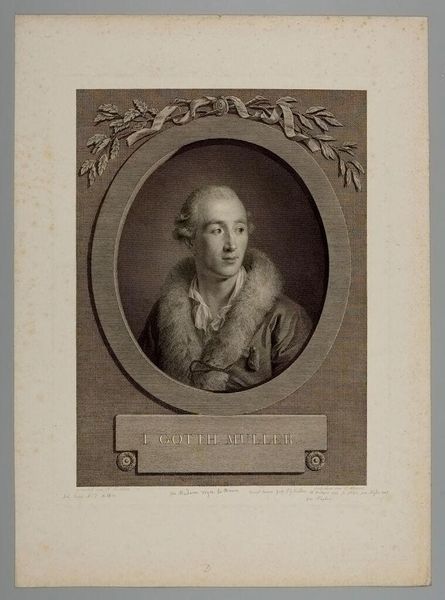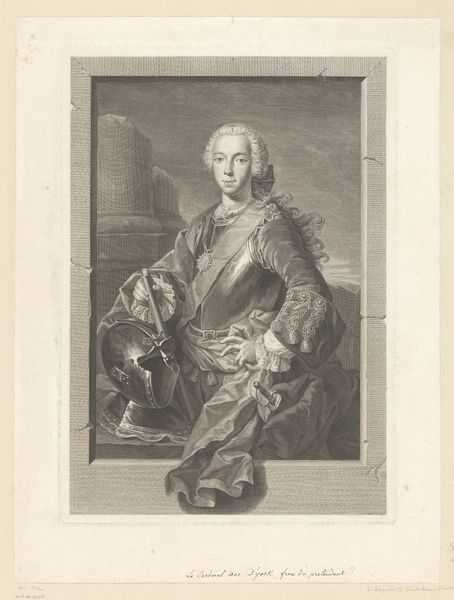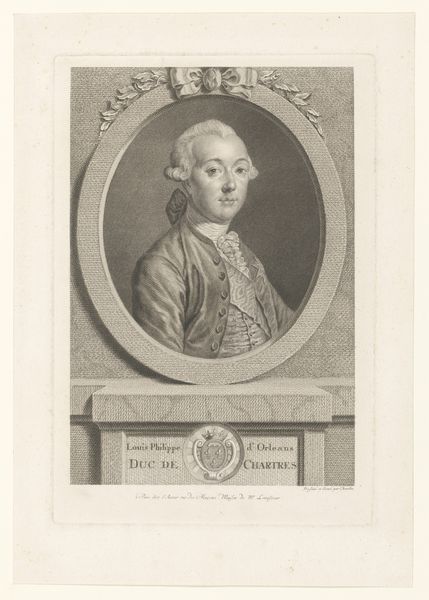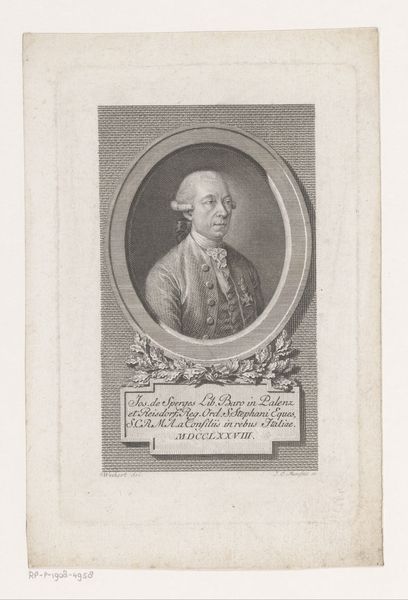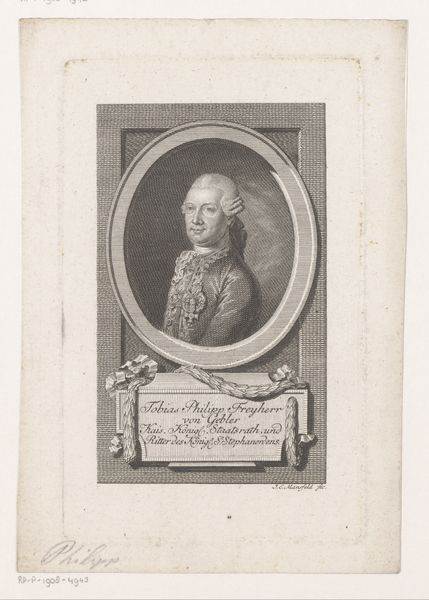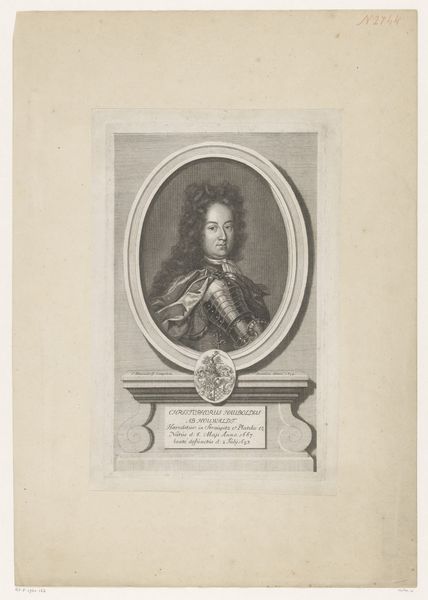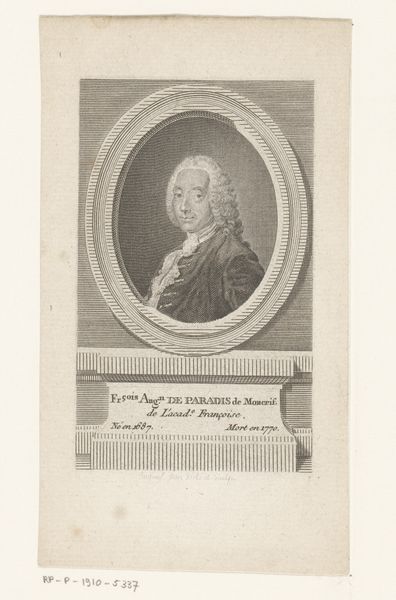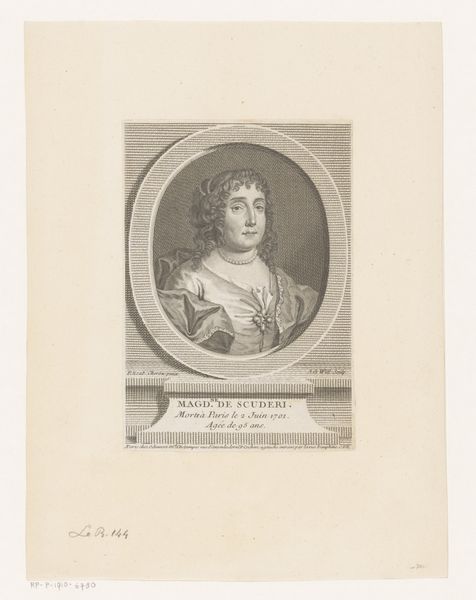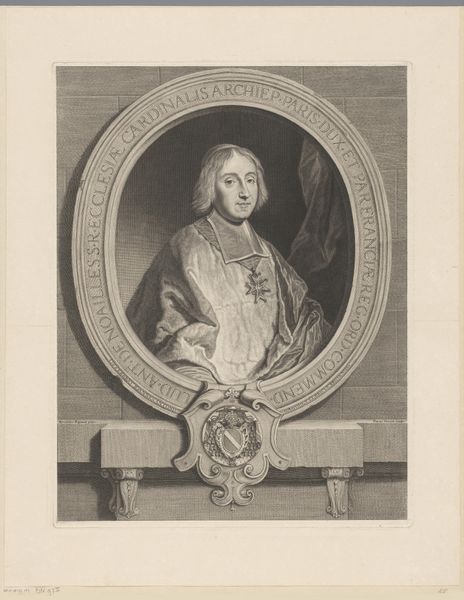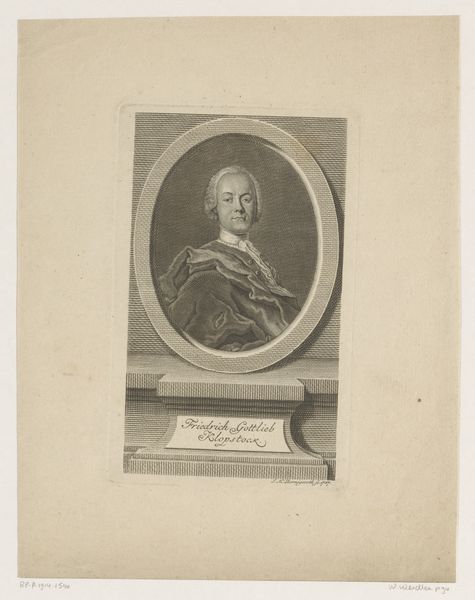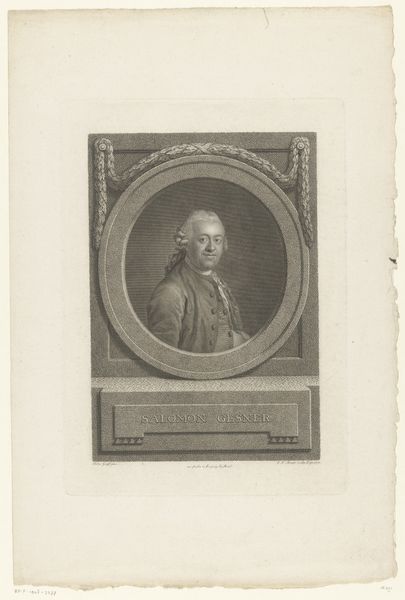
print, engraving
#
portrait
#
print photography
#
neoclacissism
#
aged paper
# print
#
academic-art
#
engraving
Dimensions: height 371 mm, width 291 mm
Copyright: Rijks Museum: Open Domain
Editor: Here we have a portrait of Johann Gotthard Müller, created between 1776 and 1820. It's an engraving, which gives it a certain… austerity. It's framed by a ribbon and some branches, which seems a little celebratory. How do you interpret this work? Curator: I'm drawn to the laurel and ribbon. What could these be telling us about Muller, beyond the purely representational function of a portrait? Consider how the circular frame and those laurel branches subtly crown him. It almost elevates him, hinting perhaps at his virtues, his intellectual prowess, or societal role. This symbol of victory and status would have carried substantial meaning for viewers then. What feeling do you get from that knowing sidelong glance? Editor: He definitely looks like he knows something! The fur collar adds to that sense of importance, doesn’t it? I mean, that's not exactly everyday wear. Curator: Indeed. Fur historically signifies wealth, status, and even power. The artist subtly signals Müller's place in society, but also maybe something of his personality. Are you sensing a tension between his rather subtle glance and the boldness of his attire? Think about how societal portraits were often less about capturing individual identity and more about encoding societal status. It's all so deliberately crafted to convey not just likeness, but significance. Editor: I hadn't considered the tension between his gaze and the rest of the image before. The symbolic context makes the portrait much richer. Thanks for illuminating the hidden meanings! Curator: The pleasure is mine! Hopefully, understanding those symbols gives us a clearer lens for interpreting the man and the age he represents.
Comments
No comments
Be the first to comment and join the conversation on the ultimate creative platform.
